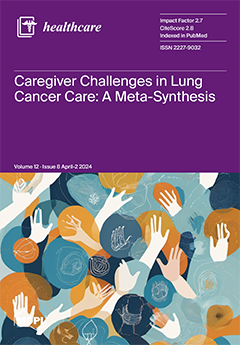Background: Cancer affects the emotional well-being of patients and caregivers, highlighting the need for effective communication strategies. This study explores a community-based communication intervention for Latino caregiver–patient dyads coping with cancer. The acceptability of the intervention, along with its associated facilitators and
[...] Read more.
Background: Cancer affects the emotional well-being of patients and caregivers, highlighting the need for effective communication strategies. This study explores a community-based communication intervention for Latino caregiver–patient dyads coping with cancer. The acceptability of the intervention, along with its associated facilitators and barriers, are crucial considerations.
Methods: Three focus group interviews involved healthcare providers, community partners, patients, and caregivers to discuss the communication needs of this population and the components of a communication intervention while identifying facilitators and barriers to the intervention. Qualitative thematic content analysis was conducted using Nvivo v12, ensuring reliability through independent analysis and consensus building.
Results: Participants (89% female, average age of 53) included patients (30%), caregivers (30%), community partners (25%), and healthcare providers (15%), and they discussed the overall acceptability of adapting a communication intervention, where they emphasized benefits for caregivers and patients, primarily through support groups. Communication strategies accepted by participants include psychological support, cancer education, assertive communication skills, and methods for improved interactions with healthcare providers and extended family.
Conclusions: Participants’ responses align with the current literature, emphasizing problem-solving, mutual support, and communication strategies and underscoring the role of community partners. The study underlines the necessity for culturally tailored communication interventions for Latino families facing cancer.
Full article






